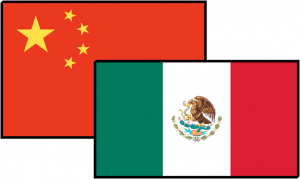Mexican Immigration Is Slowing While Asian Immigration Grows
 Data recently released by the Pew Hispanic Center allows us to draw two conclusions about Latinos in the U.S.. First, the myth that Mexicans are “flooding America” is proven to be that — there is no Mexican “enjambre,” despite what people like to pretend — rather there is a very diverse fabric being weaved of Hispanics within America.
Data recently released by the Pew Hispanic Center allows us to draw two conclusions about Latinos in the U.S.. First, the myth that Mexicans are “flooding America” is proven to be that — there is no Mexican “enjambre,” despite what people like to pretend — rather there is a very diverse fabric being weaved of Hispanics within America.
We can also roughly assume that Asian immigrants are going to be the next wave of immigrants to America. However, compared to the Hispanic immigration numbers, we simply can’t place these immigrants to one origin country or region, yet, due to how the Center’s data is broken down.
The Pew Hispanic Center released a set of data on foreign-born population estimations from 2009-2010 showing that the estimated number of foreign-born persons living in the country was overestimated by the U.S. Census’ American Community Survey. The ACS estimated that the U.S. foreign-born population in 2010 was at 39.9 Million, a 4% increase from the survey’s 2009 estimate of 38.5 Million.
Analysis by the Pew Center suggests that the increase from 2009 to 2010 is a much smaller 1.6%.
The Center categorizes the incoming population by geographical region. Out of the 616,000 that came between 2009 and 2010, the majority of them (by a very slim amount) do not come from Latin America; 317,000 come from the rest of the world, with South and East Asia leading the way. This suggests that an Asian immigrant tide in the U.S. might occur in the future.
Meanwhile, immigration from the Americas — not including Canada — shows some interesting numbers as well. Mexico and Central America are the source of very, very, few immigrants these days: 220,000 of the Latin American immigrants are from the Caribbean; 65,000 from South America.
The decline in Mexican immigrants is relatively easy to explain. However, the Caribbean shift, and the question of why Asian immigration to America is rising is another question to be answered in the future. Multiple countries are defined as “Caribbean,” and requires each nation’s economic situation to be examined to try to draw some conclusions.
With the Pew Center merging South Asia and East Asia into one category, we are left to guess. South Korea and Japan are relatively prosperous, is an influx of Chinese immigrants to America next?
[Image Created With This And This]
